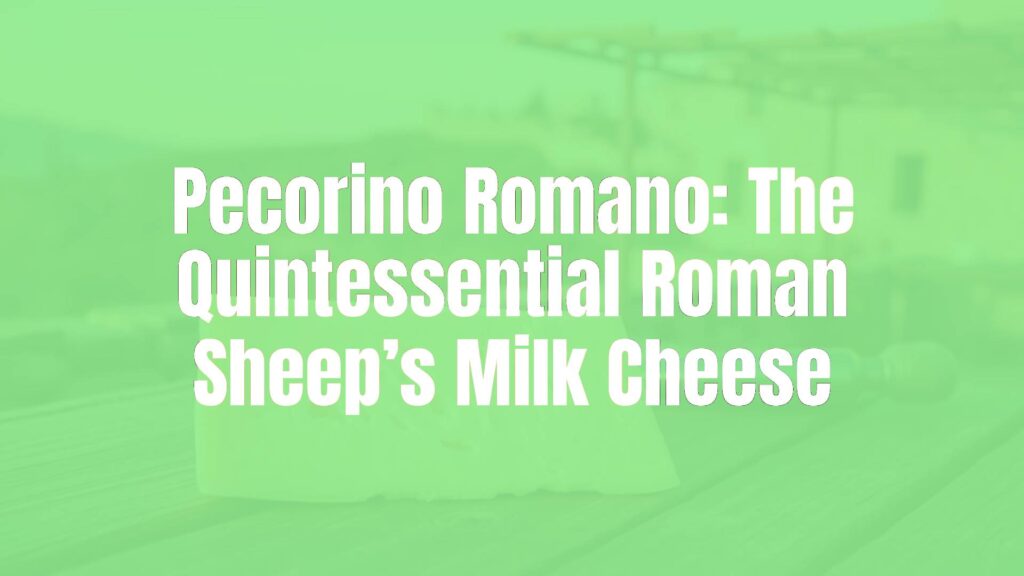Pecorino Romano: An Overview
Pecorino Romano is a cherished Italian cheese with a history spanning more than two millennia. As one of the most famous types of pecorino (sheep’s milk cheese), it is instantly recognizable for its robust flavor, hard texture, and distinctive salty tang. Primarily produced in the regions of Lazio, Sardinia, and the province of Grosseto in Tuscany, Pecorino Romano holds a special place in both Italian cuisine and heritage.
What Sets Pecorino Romano Apart
The defining characteristics of Pecorino Romano include its hard and granular texture and its bold, salty flavor profile. Made exclusively from the milk of sheep grazing on the aromatic pastures of central and southern Italy, the cheese takes on a unique character imbued with the essence of the Mediterranean landscape. Typically matured for at least five months—often longer for grating—Pecorino Romano develops a crumbly, yet compact, consistency ideal for culinary uses.
Historical Significance and Origins
Pecorino Romano is among Italy’s oldest cheeses, dating back to Roman times. The cheese was a staple in the Roman soldiers’ rations, prized for its nutritious content and remarkable shelf life. Its name pays tribute to Rome, but its production now extends widely in Sardinia, where much of today’s commercial output originates. Its enduring legacy is preserved by the Protected Designation of Origin (PDO) status, which ensures traditional methods and regional authenticity.
Production Practices
The making of Pecorino Romano is a careful process rooted in ancient method. Fresh sheep’s milk is curdled using natural lamb rennet, and the cheese is shaped into large, drum-like wheels. Each wheel is salted repeatedly over many days—a hallmark step that accentuates its savory impact. After salting, the cheese matures in controlled environments, gradually developing its firm texture and complex flavors.
Cultural Relevance and Table Traditions
Pecorino Romano is integral to Roman culinary tradition. More than just a cheese, it is a symbol of the tastes and rhythms of rural central Italy. Its robust profile makes it a cornerstone ingredient in famed dishes such as cacio e pepe, amatriciana, and carbonara. Often grated atop pasta, risotto, or soup, its assertive presence shapes the identity of many beloved Italian recipes.
Pairings and Serving Modes
While Pecorino Romano is famous as a grating cheese, it also shines in antipasti platters when served in shards or slices. Its sharpness pairs beautifully with fresh pears, figs, or a drizzle of honey, creating a harmony of savory and sweet. For beverages, bold red wines such as Chianti or a robust Nero d’Avola offer a classic complement, while crisp Italian lagers can refresh the palate between bites.
Regional Nuances and Alternatives
Although the term Pecorino refers broadly to sheep’s milk cheeses across Italy, Pecorino Romano remains distinguished by its saltiness and hardness. In contrast, Pecorino Toscano and Pecorino Sardo often have milder, softer profiles and are enjoyed fresh or semi-aged. Its distinctive taste ensures Pecorino Romano remains the cheese of choice for signature Roman pasta dishes.
Enjoying Pecorino Romano
To experience Pecorino Romano at its best, savor it freshly grated over hot dishes or sample small wedges alongside seasonal fruit. When storing, wrap the cheese tightly and refrigerate, allowing it to come to room temperature before serving to release its full aroma and flavor.

